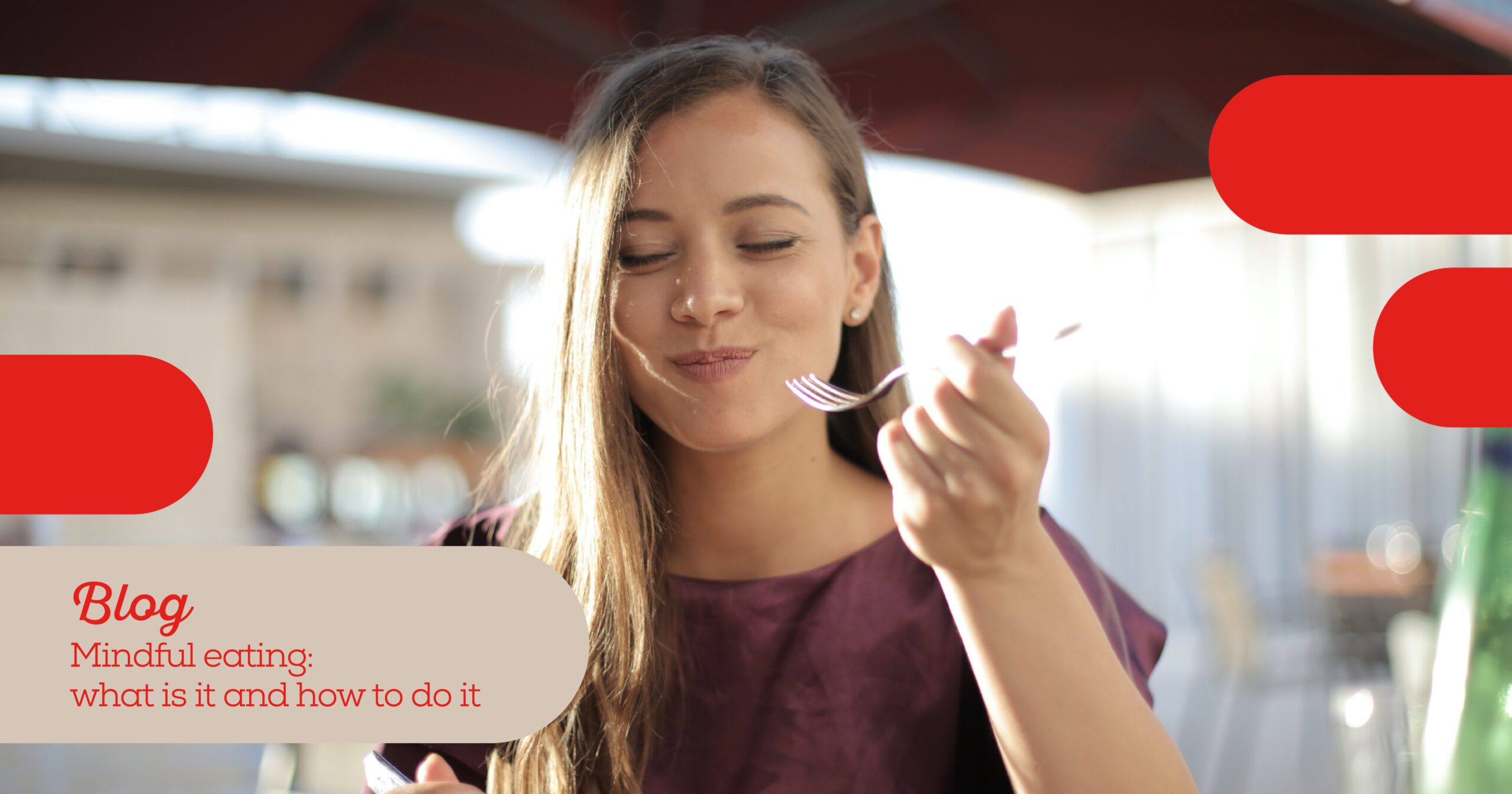
In a stress-filled life where we go from one place to another without stopping, meal times take a back seat and we tend to get into bad eating habits. Coupled with a sedentary lifestyle and excessive alcohol consumption, that is the cause of many diseases.
That’s where Mindful Eating, also called Mindfoodness , comes in. The name is a play on Mindfulness and it is based on giving attention and intention to experiencing the thoughts, feelings, sensations and behaviours that take place before, during and after the act of eating.
It’s not about what to eat but about how and why we eat. The goal is to be aware of the physiological and emotional sensations of the eating process, distinguishing physical hunger from emotional hunger. In other words, to be able to listen to our bodies and spot the signals that tell us when to begin or stop the ingestion of food.
Benefits of mindful eating
Although the purpose of eating consciously is not to lose weight, it’s true that it’s very likely that people who eat consciously will lose weight, because they learn to eat when they truly need to without giving in to cravings or overeating.
From our earliest years we learn patterns of relationships with food and associate eating with meeting needs other than hunger. For example, you have probably found yourself in situations where you have eaten out of anxiety, sadness, boredom, loneliness, at the insistence of the people around you or, simply because there’s food on your plate. However, when we eat consciously, eating is no longer something automatic and emotional, because we always know what we are eating, which helps us to control how much we eat and to enjoy food more.
In short, mindful eating or mindfoodness is not about dieting, or restricting or eating more of particular foods. It just means eating well from a mental and emotional perspective, and not being affected by our emotions and mental state when we sit down to eat.
Eating styles
Our eating style is the way we relate to food, i.e., the stimuli that prompt us to eat, independently from our body’s internal signals. There are three styles of eating:
- Restrictive: associated with strict diets and cutting out specific foods. Restrictive eating is unsustainable in the medium and long term, because food restriction itself leads to food cravings.
- Emotional: emotional eating is when we try to manage our emotions through food.
- External: external eating is when the desire to eat is triggered by signals that are outside us, like smells or colours or because there’s a plate in front of us.
Note that eating styles are not a problem in themselves, the question is to how far inattention and disconnection from the body’s signals can lead to poor eating habits. And this is where mindful eating, mindfoodness, comes in, making you aware of these types of behaviours in order to correct your eating habits.
How can I eat consciously?
There are a series of actions and exercises that can help us to eat consciously, but we must remember that it takes time and commitment. Here are some tips:
- Choose a good place. Eat somewhere that is as pleasant as possible (bright, quiet, spacious, tidy, etc.)
- Take your time. Don’t watch the clock and eat in a rush thinking that you’re running late.
- Eat when your body truly asks you to. If you feel that you want to eat out of boredom, anger, loneliness or stress don’t eat and instead take a hot shower, call a friend, go for a walk, listen to some music…
- Drink water. Drink a glass of water before lunch and dinner, to make yourself feel full and calm any anxiety
- Eat without distractions. If you connect to a device – phone, TV, tablet, computer – you disconnect from yourself. Your brain doesn’t pay much attention to the fact of eating, so if we do other tasks while we eat, the brain doesn’t notice that we have eaten and tries to make us eat again.
- Sit down to eat. Don’t eat standing up, even if it’s just a snack, always eat sitting down with a plate in front of you, so that you are aware that you are eating.
- Exercise and meditation. Give a few minutes of your day to meditation to train your attention, and incorporate habits into your daily life like taking the stairs instead of the lift, getting off one stop before the Tube or bus stop to continue your journey on foot…
- Whole food. Eat whole foods because they contain all their nutrients intact, helping to nourish your cells and reduce the feeling of physical anxiety and insatiable hunger
- Find new recipes. Distract your brain with learning by discovering new things. It increases your self-esteem and is a positive way to manage emotions
- Chew deliberately. Eat calmly, chewing properly and pause between mouthfuls.
- Eat appropriate amounts and do not abuse food. From an early age we have been taught that it’s rude to leave food on our plates, so most of us tend to finish everything in front of us, regardless of when we feel full.
Let’s enjoy Spanish culture in which people eat on terraces, enjoying moments in company and every sip of coffee and dish that we are served at the table. Let’s not lose those good customs that help us to follow good eating habits and help us with our physical and mental health.







